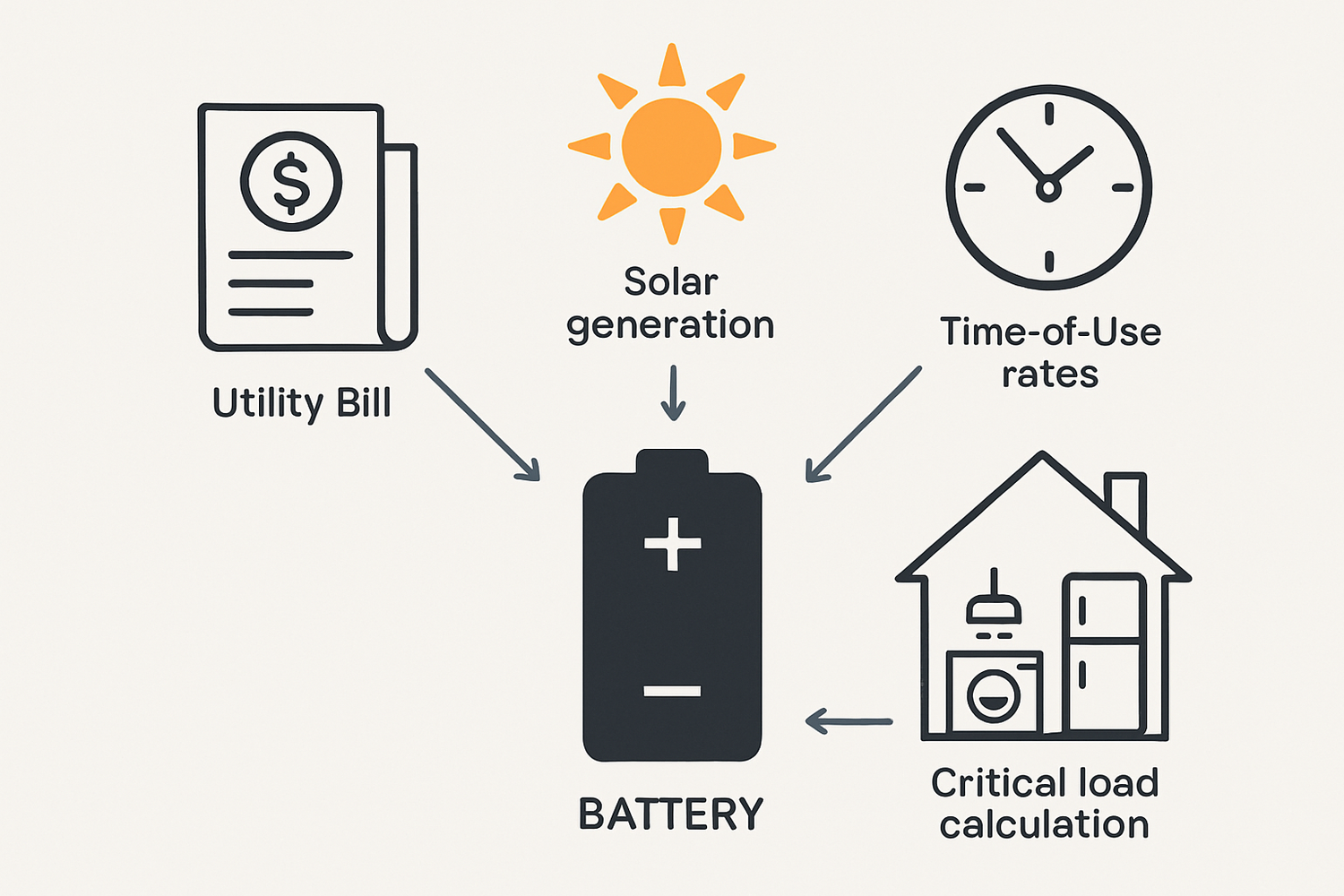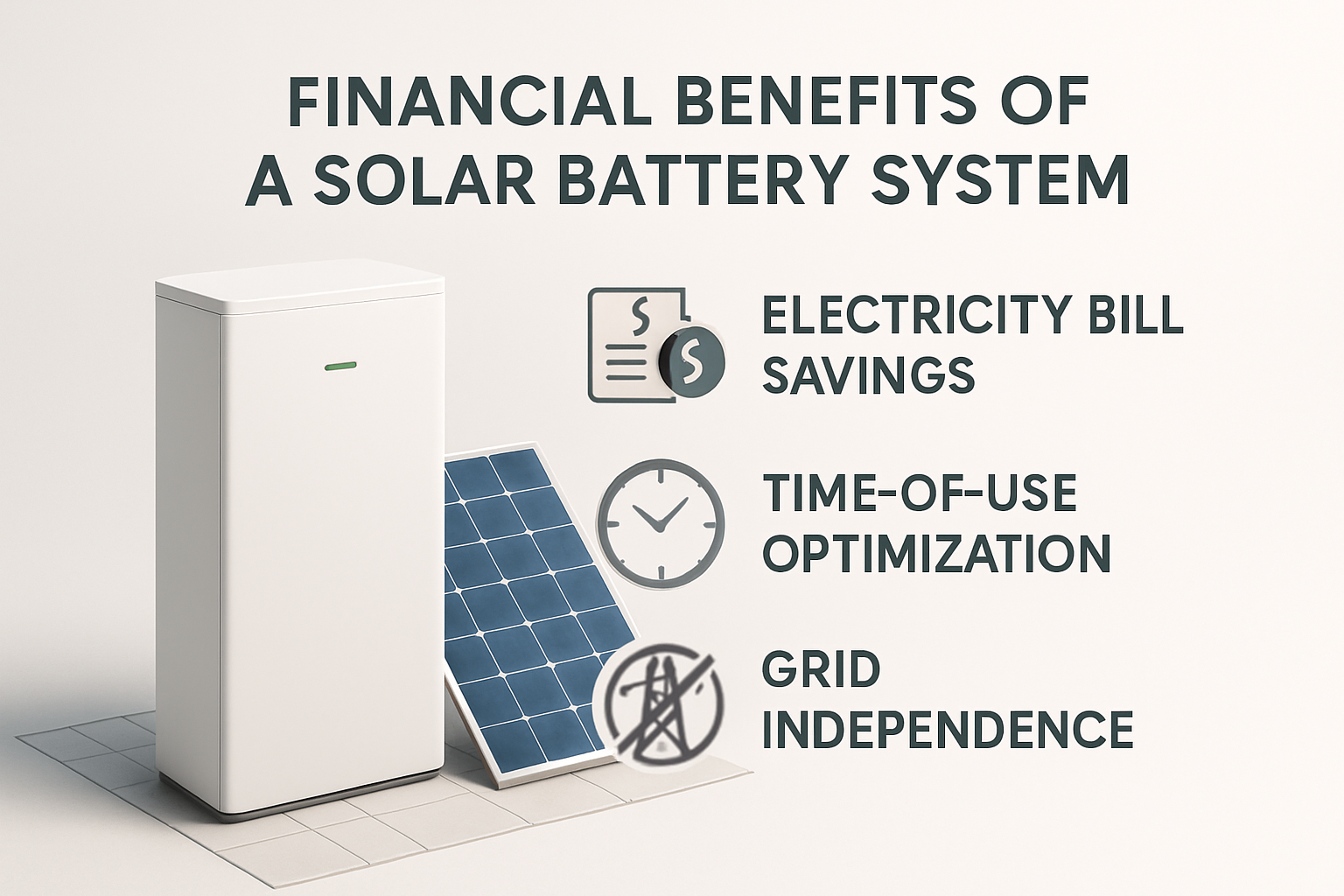Pairing a solar panel system with energy storage unlocks its full potential. You gain energy independence, resilience against outages, and greater control over your electricity bills. However, the financial return on your investment hinges on one critical factor: correctly sizing the battery. A system that is too small will not meet your needs, while an oversized system leads to wasted capacity and a diminished return on investment (ROI). This text explains how to find the right balance for your home.
Understanding the Core Factors of System Sizing
Properly sizing a solar energy storage system requires a clear understanding of your specific energy profile and goals. It is not a one-size-fits-all calculation. Three key areas provide the data needed for an informed decision.
Analyzing Your Daily Energy Consumption
The first step is to determine how much electricity you use. Your utility bills are the best source for this information. Look for your average daily energy consumption, usually listed in kilowatt-hours (kWh). Pay close attention to how this usage varies between seasons. You will likely use more energy in the summer for air conditioning or in the winter for heating. Also, identify your peak usage times. Knowing when you use the most electricity is crucial for designing a system that can offset high-cost energy from the grid, especially if your utility has Time-of-Use (TOU) rates.
Assessing Your Solar Generation Potential
Your solar array is the engine that charges your battery. The battery's capacity should be in harmony with your solar panels' production capability. A large battery paired with a small solar array may never fully charge, leaving you without the stored energy you need. Conversely, a small battery with a large array will fill up quickly, and any excess solar energy will be sent to the grid for minimal compensation. Your system's output depends on its size (in kW), your geographic location, panel orientation, and any potential shading issues.
Defining Your Energy Goals
What do you want your solar battery to accomplish? Your primary objective directly influences the ideal size. The main goals typically fall into three categories:
- Backup Power: If your priority is keeping essential appliances running during a grid outage, the battery must be sized to cover the power and energy needs of those critical loads for a specific duration.
- Maximizing Self-Consumption: To use as much of your own solar power as possible, you need a battery large enough to store excess energy generated during the day for use at night.
- Time-of-Use Bill Management: For those with TOU electricity rates, the goal is to store low-cost solar energy or off-peak grid energy to use during expensive peak hours. The battery size should correspond to your energy consumption during these peak periods.
The Financials of Sizing: Costs vs. Benefits
Sizing for maximum ROI involves a careful cost-benefit analysis. A larger system offers more capacity but comes at a higher upfront cost. The key is to find the sweet spot where the incremental benefits still justify the investment.
The Upfront Investment: More Than Just the Battery
The total cost of a solar energy storage system includes several components. The battery itself is the largest expense, but you must also account for the hybrid inverter, wiring, and professional installation. High-quality components, such as Lithium Iron Phosphate (LiFePO4) batteries, offer superior safety and longevity, contributing to a better long-term ROI. According to the World Energy Investment 2023 report, while global supply chains can affect component costs, government policies often provide incentives that can reduce the net investment in clean energy technologies like battery storage.
| System Size | Estimated Battery Cost | Estimated Total Installed Cost |
|---|---|---|
| 5 kWh | $3,000 - $4,000 | $6,000 - $9,000 |
| 10 kWh | $6,000 - $8,000 | $10,000 - $15,000 |
| 15 kWh | $9,000 - $12,000 | $14,000 - $20,000 |
Note: These are generalized estimates. Actual costs vary based on location, brand, and installation complexity.
Quantifying the Returns: Savings and Incentives
The value generated by your battery system comes from several streams. The most direct return is the reduction in your electricity bills from using stored solar energy instead of grid power. With TOU rates, you can generate significant savings by avoiding high-cost peak electricity. Additionally, many regions offer financial incentives, such as tax credits or rebates, that can substantially lower the initial cost and shorten the payback period. The U.S. Department of Energy highlights how energy storage enhances grid resilience, a benefit that is increasingly valued and supported through various programs.
The Law of Diminishing Returns in Sizing
Bigger is not always better for ROI. Each kilowatt-hour of storage capacity you add increases the cost. At a certain point, the cost of adding more capacity outweighs the additional savings it can generate. For example, if your nightly energy usage is 8 kWh, a 10 kWh battery will cover your needs completely. Upgrading to a 15 kWh battery would increase your costs significantly but provide little additional daily savings, as the extra 5 kWh of capacity would go unused most days. This leads to a longer payback period and a lower overall ROI.
Sizing Methodologies and Practical Calculations
With a clear understanding of your goals and energy data, you can apply specific methodologies to calculate the right battery size. These calculations provide a strong starting point for your system design.
Sizing for Self-Consumption
This approach aims to store enough solar energy to power your home through the evening and overnight. A common strategy is to size the battery to cover your average energy consumption from sunset to sunrise. For example, if your home uses an average of 12 kWh between 6 PM and 8 AM, a 12-14 kWh battery would be a suitable target to maximize self-consumption.
Sizing for Backup Power
To size for backup, you must first identify your critical loads—the appliances you cannot live without during an outage. Calculate their combined power draw (in watts) and estimate how many hours you want them to run. For instance, a refrigerator (200W), some lights (50W), and an internet router (10W) total 260 watts. For 8 hours of backup, you would need: 260 W x 8 h = 2,080 Wh, or approximately 2.1 kWh of usable battery capacity.
Sizing for Time-of-Use Optimization
This method focuses on eliminating your reliance on the grid during high-cost peak hours. Analyze your utility bills to determine your average energy consumption during the peak TOU window. If your peak period is from 4 PM to 9 PM and you use an average of 7 kWh during that time, you would need a battery with at least 7 kWh of usable capacity. Performance metrics like Depth of Discharge (DoD) and round-trip efficiency are vital for ensuring the battery can deliver the required energy. For a deeper analysis of these factors, you can review this guide on solar storage performance.
Advanced Considerations for Optimal ROI
Beyond the basic calculations, a few other factors can influence the long-term financial performance of your energy storage system.
Battery Chemistry and Lifespan
The type of battery you choose has a significant impact on its lifespan and, consequently, its long-term value. Lithium Iron Phosphate (LiFePO4) batteries are a leading choice for residential energy storage due to their long cycle life, enhanced safety, and thermal stability. A battery that can endure more charge-discharge cycles will deliver value for more years, improving its overall ROI. The concept of Levelized Cost of Storage (LCOS) is useful here. As noted in the Renewable Power Generation Costs in 2024 analysis by IRENA, LCOS provides a way to compare the total lifetime cost of different storage technologies, and systems with longer lifespans typically have a more favorable LCOS.
Scalability and Future-Proofing
Your energy needs may change over time. You might purchase an electric vehicle or add an extension to your home. Choosing a modular energy storage system allows you to add more battery capacity in the future without replacing the entire system. An initial investment in a scalable system with a capable hybrid inverter can save you significant money down the road and ensures your system continues to meet your needs.
Putting It All Together
Sizing your solar energy storage system is a balancing act between your daily needs, your specific goals, and your financial budget. By analyzing your energy consumption, understanding your solar generation, and defining your objectives, you can calculate a size that delivers the most value. The optimal system is not the biggest one you can afford, but the one that works most efficiently for you, year after year. A correctly sized system ensures you get the resilience and savings you expect, maximizing your return on investment.
Disclaimer: The information provided is for educational purposes only and does not constitute financial or investment advice. Consult with a qualified professional before making any decisions.
Frequently Asked Questions
What is the ideal depth of discharge (DoD) for a solar battery?
Most modern lithium-ion batteries, especially LiFePO4, can handle a high depth of discharge, often 80-100%. However, operating at a slightly lower DoD, such as 80-90%, can extend the battery's cycle life, improving long-term ROI. Always check the manufacturer's specifications.
How does my geographic location affect battery sizing?
Your location determines the amount of solar irradiance you receive, which dictates how much energy your panels can produce daily. In areas with less sun, you might need a larger solar array to fully charge a given battery size, or you may size the battery smaller to ensure it gets fully charged regularly.
Can I add more batteries to my system later?
This depends on the system's design. Many modern energy storage systems are modular, allowing you to add more battery capacity later. It is crucial to confirm this capability with your installer and choose an inverter that can handle the future, larger capacity.





Leave a comment
All comments are moderated before being published.
This site is protected by hCaptcha and the hCaptcha Privacy Policy and Terms of Service apply.